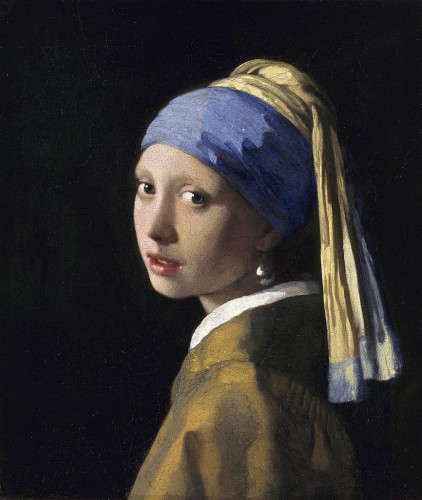

Girl With a Pearl Earring – Johannes Vermeer
I’ve been selected to study Dutch art at the High Museum this summer! Here’s a summary from the Council of Independent Colleges prospectus:
A rare traveling exhibition of masterpieces of Dutch Golden Age paintings featuring works by Vermeer, Hals, Rembrandt, and others will visit the United States in 2013, while the collection’s home at the Netherlands’ Royal Picture Gallery Mauritshuis in The Hague undergoes an extensive two-year renovation. This extraordinary museum, housing one of the world’s most prestigious collections of Dutch art,
has not lent a large body of works from its holdings in nearly 30 years. The exhibition, “Girl with a Pearl Earring: Dutch Paintings from the Mauritshuis,” makes just three stops in the U.S. and will be on view at the High Museum of Art in Atlanta, Georgia, beginning in June 2013. CIC has the good fortune to partner with the High Museum to take advantage of this opportunity and is pleased to announce a seminar for teachers of art history at CIC colleges and universities on “Dutch Art, Patrons, and Markets” to be held in conjunction with the exhibit.Dutch art of the 17th century has long been popular for the visual pleasures of its naturalistic scenes, but it is also a landmark in the development of the modern art world. During the 17th century, the practices of making and buying art boomed as never before. With the creation of the first large-scale open art market, prosperous Dutch merchants, artisans, and civil servants bought paintings and prints in unprecedented numbers. Foreign visitors were astonished that even modest members of Dutch society such as farmers and bakers owned multiple works of art. Dutch 17th-century art saw the rise of new subjects, as landscapes, still lifes, and scenes of daily life replaced formerly dominant religious images and scenes from classical mythology. Portraiture also flourished in this prosperous atmosphere.
In this seminar, participants will discuss the issues that this new secular world of art presented in early modern Europe. Topics such as the challenges of interpreting art that is not text-based, the relative roles of nature and
the imagination in creating Dutch art, Dutch Protestant limits on religious art, the development of the open art market, the high level of technical proficiency of Dutch artists, and the role of the viewer in creating meaning will be addressed. Discussions will take place in the exhibition galleries, in the conservation workshop of the High Museum of Art, and in the museum’s permanent collection and works on paper study center. The seminar will be especially valuable for faculty members at institutions without large campus museums or proximity to major art museums. Art historians in all fields and studio artists as well as faculty members who specialize in history, European studies, and related fields will find this seminar of interest.